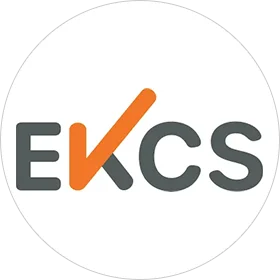Our dedication to exceptional CX design has driven success for brands across the globe, turning every customer interaction into an opportunity for engagement and loyalty.
Our CX Design
Foundations
Discover the core services that define our approach to CX Design & Development, tailored to create a holistic and impactful customer journey.
Omni Channel Customer Experience
Forge a consistent, seamless customer journey across all channels, ensuring a unified brand experience wherever your customers are.
CMS Expertise
Leverage our deep knowledge in content management systems to deliver dynamic, content-rich experiences that resonate with your audience.
Adobe Experience Manager
Utilize the power of Adobe Experience Manager with us to create, manage, and optimize customer experiences that drive engagement and conversion.
Our CX Design & Development centres on deeply understanding and innovating the customer journey, merging strategy, technology, and creativity to create personalized, engaging experiences that drive growth and loyalty.

Strategic Insight
We delve into your brand and market for insights, aligning our CX solutions with your goals and customer needs.

Technology Integration
We use the latest digital tech to enhance and smooth the customer experience at every touchpoint.

Creative Excellence
Beyond visual appeal, our designs connect emotionally, crafting memorable experiences that build loyalty.

Personalized Engagement
Our belief in personalization shapes CX strategies that engage your audience personally, boosting connections and conversions.
Our
Case Studies
Powering Industries through Tech Transformations
FAQs - Customer Experience Transformation
Neuronimbus offers a range of services designed to enhance customer interactions, including customer journey mapping, user experience design, digital transformation strategies, and data-driven insights to optimize engagement across all touchpoints.
These services typically start with a diagnostic phase where customer journey maps are analyzed to identify critical pain points. This is followed by the development of a strategy that integrates customer feedback and behavioral data to drive design and process changes. Implementation involves deploying technology solutions, training staff, and possibly restructuring teams to support the new customer-focused approach.
Absolutely. Each industry has unique customer expectations and regulatory requirements that influence how services should be delivered. For instance, in healthcare, patient privacy is paramount, whereas, in retail, the focus might be more on personalization and convenience. Customization involves aligning the transformation strategy with these industry-specific nuances to ensure relevance and compliance.
Key performance indicators (KPIs) such as Net Promoter Score (NPS), Customer Satisfaction Score (CSAT), customer effort score, and retention rates are commonly used to measure success. Additionally, qualitative feedback through customer surveys and focus groups provides insights into the impact of changes made.
The timeline can vary widely based on the scope and depth of the project. Smaller-scale projects might take 3-6 months, while larger, more comprehensive transformations could take several years to fully implement. Ongoing evaluation and adjustment are part of the process, as customer needs and technologies continue to evolve.
Transforming customer experience is vital as it directly affects a company's bottom line by improving customer loyalty, reducing churn, and increasing lifetime customer value. In competitive markets, providing a superior customer experience can differentiate a company from its competitors, making it a critical strategic advantage.
Advanced technologies like artificial intelligence (AI), machine learning, big data analytics, and cloud-based CRM systems are employed to automate and enhance customer interactions, gather insightful data, and deliver personalized customer experiences. Additionally, omnichannel solutions ensure consistency across digital and physical platforms.
Businesses can expect a significant improvement in customer satisfaction rates, increased customer retention, and higher customer lifetime values. Internally, companies often see more efficient processes, reduced service costs, and improved employee satisfaction as roles become more customer-centric and data-driven.
Some common challenges include aligning internal teams towards a customer-first strategy, integrating new technology with legacy systems, and managing the change process across a large organization. Resistance to change from employees accustomed to old processes can also hinder transformation efforts.
It's essential to involve stakeholders from across the organization, including IT, customer service, marketing, sales, and executive leadership. Involving employees who interact directly with customers can provide actionable insights and help in designing solutions that genuinely meet customer needs.
Next Level Tech,
Engineered at the Speed of Now!
Are you in?
Let Neuronimbus chart your course to a higher growth trajectory. Drop us a line, we'll get the conversation started.




































